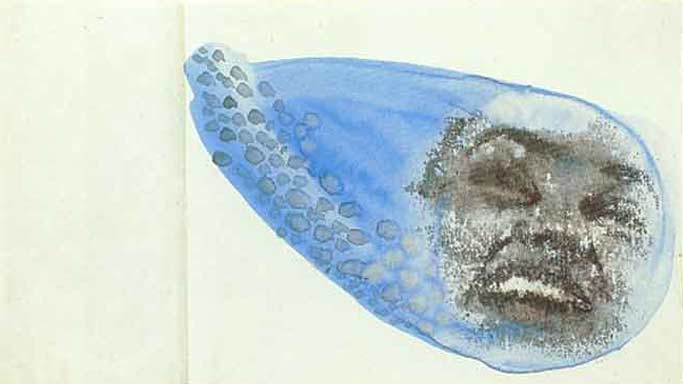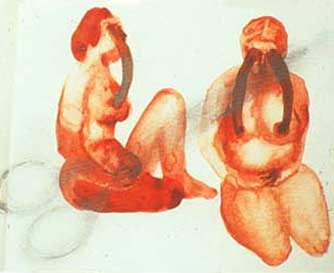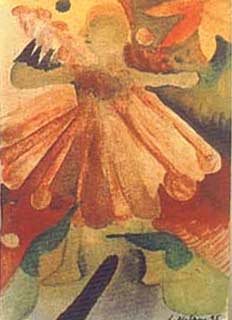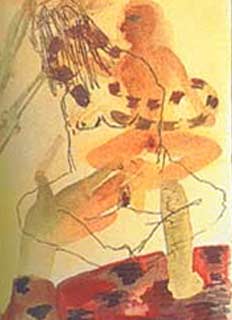 |
 |
 |
 |
 |
 |
 |
|
|
Medea books Paintings, Installation, Books, Theatre, Video 1991 - 1995 MedeaProjekt : Paintings > Books > Theatre > Installation > Video > |
| The subject is so much larger than what one tries to contain in an art work . Somehow one goes on anxiously..and that's what happened with the Medea myth. I had to make the Alchemist's Diary and the robes after painting the panels. Nalini Malani |  |
|
The walls of Max Mueller Bhavan Bombay, which carried the painted panels
for Malani’s Medea installation functioned as an enlarged accordion
book in an inversion of this relationship. For, here it was paintings
responding to the broken, organic auto-narrative of the colonized Medea
that were the ‘content’ of the book. From being a repository
of knowledge that serves the purpose of history from the dominant group
in society, the book here was made into the carrier of the experience
of the colonized and the subjugated, manifest in an inchoate rendering
of experience over space and time. And this rendering of experience
came from many directions. From a pair of panels that referred directly
to the riot-hit city, the images led on in associative relays over a
panorama that straddled the gamut of human conditions in a discontinuous
narrative that offered viewers the opportunity to construct their own
interpretations. |
 |
| 1994 Max Mueller
Bhavan Bombay 1995 National Centre for the Performing Arts, Bombay 1995 First Africus Biennale Johannesburg 1996 Asia Pacific Triennial, Brisbane 2002 New Museum, New York |
 |
| copyright
© 2004 Nalini Malani |
